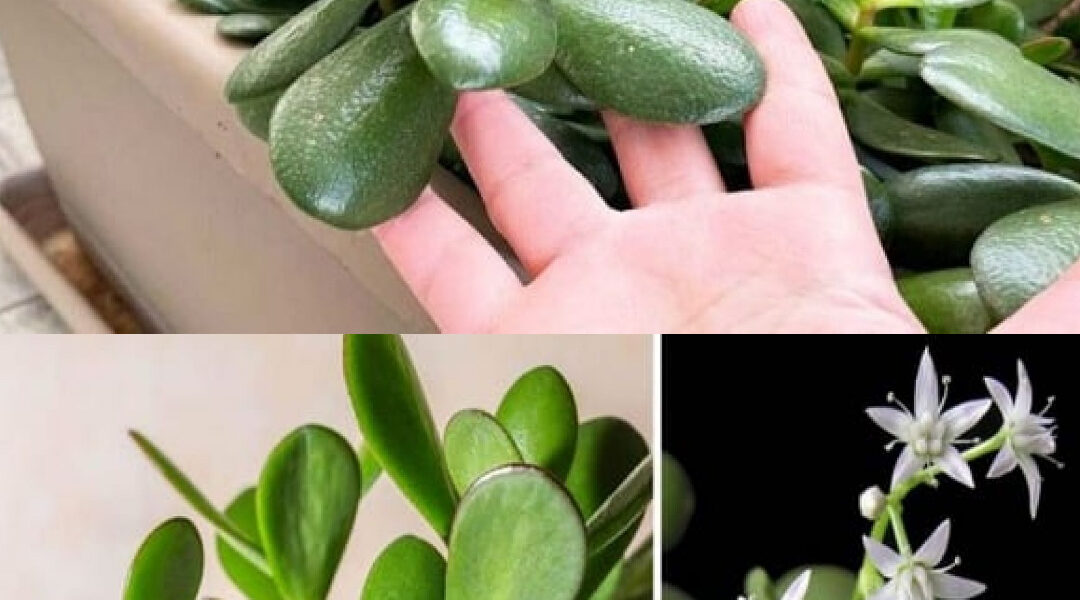Tips for Making the Jade Tree Bloom and Beautifying the House
Crassula ovata, nicknamed money plant, is an easy-care perennial succulent plant that you can grow indoors even if you don’t have a green thumb. It allows you to decorate your home, but also to attract luck. Indeed, according to Feng Shui, the jade tree could attract abundance and prosperity to the house.
Find out how to make your jade tree bloom and attract good luck to your home.
Watering the Jade tree indoors
The Jade tree can grow dense so its root system must be well developed to support the weight of the leaves and branches.
By limiting watering you force the roots to seek humidity and therefore to develop.
During flowering, 1 to 2 waterings per week, when the soil is very dry.
Outside of flowering periods, 1 to 2 waterings every 15 days.
In winter, light watering once a month is more than enough.
In all cases, it is important to wait until the soil is very dry before watering but also to favor good watering rather than a multitude of small waterings.
The leaves of succulents are loaded with water. If they sag, they need to be watered.
Best location
The Jade tree should be placed in a lit corner without direct exposure to sunlight.This could actually burn its leaves.
In addition, some experts have demonstrated that it is necessary to place this plant in a cold corner of the house in late fall. This would help it flower quickly.
Finally, the Jade plant should definitely not be placed in the kitchen or bathroom.Indeed, excess humidity and heat make it suffer and prevent it from flowering.
Should we add fertilizer?
Crassula maintenance does not require the use of fertilizers since they are rock garden plants accustomed to poor soil.
However, you can give them a little fertilizer for succulents and cacti once a month in spring and fall.
Pests and diseases
There are mainly two types of pests that harm the Jade tree: scale insects and aphids.
The following symptoms are often a sign that the plant is affected:
Increased leaf fall
Yellow, sticky discharge covering the leaves
If both symptoms appear, we can say with relative certainty that the plant is the victim of parasites. Weakened trees are most affected. To rid the plant of aphids, you can use sticks specially designed for this purpose. These sticks, combining a mixture of different fertilizers, are simply inserted into the ground.
When watering the Crassula ovata, the active ingredients of these sticks are then released, allowing the lasting eradication of aphids. However, if the Jade tree loses its leaves, before proceeding with pest control and taking these measures, something should be checked: has the Jade tree not been watered too liberally? Because in fact, too much watering is also the cause of leaf fall.
Size
In order to maintain a nice shape, some large succulents may need to be pruned. For example, in California, for echeveria planted in the garden, some redundant and overly dense branches need to be cut back in spring and fall. It depends on what you think and what the succulent plant is used for. Pruning tools mainly include knife, scissors and some medicines (such as sulfur powder).
In order to propagate new plants, we can also cut some leaves in spring and autumn for cutting. Sturdy stems with 5-6 leaves are often selected: cut them with a knife, then smear the wound with sulfur powder and plant it after the wound has healed. At this time, it is recommended to use a watering can to lightly wet the soil used for cutting.
Doctor’s Simple Way To Remove A Hanging Belly Works Immediately
Sleep Apnea: Ingenious Pillow Takes The US By Storm
One Cup of This Today Can Help Burn Your Belly Fat Like Crazy!
